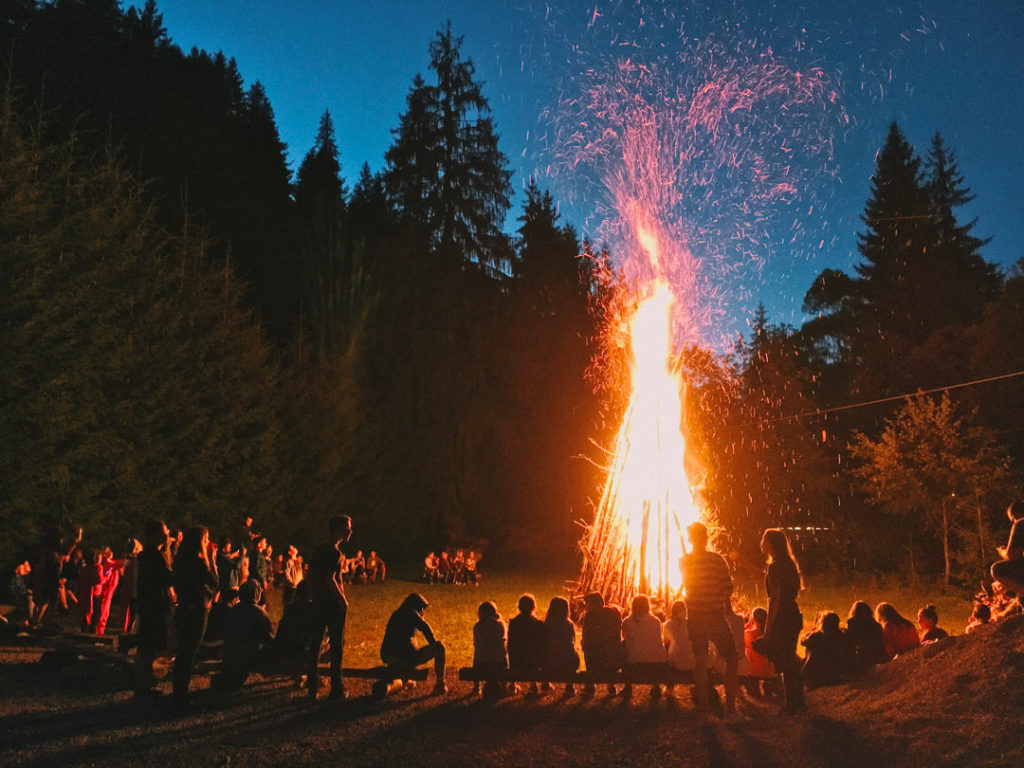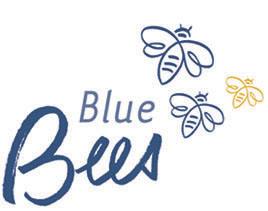24 Jun Great it’s summer!
By Claire Le Meur, CEO of Blue Bees.
The summer solstice (June 21) marks the beginning of summer… It is the day of the music festival (created in 1982 by the minister Jack Lang) but also the longest day of the year!
By the way, what is the solstice?
As you know, the Earth turns on itself but also around the sun. This rotation lasts one year, with a slightly tilted axis of rotation which has for consequence to vary our distance to the sun. The tilt towards the sun, in the northern hemisphere, reaches its maximum in summer. The sun heats up more because the rays are lower, hence the summer season. The days get longer until the summer solstice: the day when the northern hemisphere is closest to the sun.
This famous solstice has given rise, since the dawn of time, to numerous celebrations throughout the world, bringing in its wake many superstitions…
The Celts, the Persians and the Babylonians, for example, paid a special cult to the sun and invoked the god of the harvest so that the end of summer would be synonymous with good harvests. Rivers and hills were then bristling with fire to pay tribute to the solstice.
Originally a pagan festival, taken up by the Judeo-Christian tradition, the feast of St. John continues to link the summer solstice to John the Baptist (a Jewish preacher who, according to the Gospel of Luke, baptized Jesus of Nazareth, his cousin). This festival gives rise to the St. John’s Day bonfires that still blaze in France on June 24 in many regions, although the tradition tends to be lost.
 In Paris, the last Midsummer’s Day bonfires date back to the old regime. At that time, a pyre was set up in the Place de Grève(Place de l’Hôtel de ville nowadays), which the King, surrounded by his entire court, would set ablaze, as the 19th century historian Jacques-Antoine Dulaure tells us, in the case of Charles IX: “In the middle of the Place de Grève, a sixty-foot-high tree was placed, bristling with wooden crosspieces to which five hundred « bourrées » and two hundred « cotrets » were attached; at the foot of the tree, there were ten lanes of large wood and a lot of straw. One hundred and twenty archers of the city, one hundred crossbowmen, one hundred harquebusiers, were present to contain the people. The players of instruments, in particular those that were called the great band, seven trumpets sounded, increased the noise of the solemnity; the magistrates of the city, the provost of the merchants and the aldermen, carrying torches of yellow wax, advanced towards the tree surrounded by logs and faggots, presented to the king a torch of white wax, furnished with two handfuls of red velvet; and His Majesty, armed with this torch, came to gravely light the fire “.
In Paris, the last Midsummer’s Day bonfires date back to the old regime. At that time, a pyre was set up in the Place de Grève(Place de l’Hôtel de ville nowadays), which the King, surrounded by his entire court, would set ablaze, as the 19th century historian Jacques-Antoine Dulaure tells us, in the case of Charles IX: “In the middle of the Place de Grève, a sixty-foot-high tree was placed, bristling with wooden crosspieces to which five hundred « bourrées » and two hundred « cotrets » were attached; at the foot of the tree, there were ten lanes of large wood and a lot of straw. One hundred and twenty archers of the city, one hundred crossbowmen, one hundred harquebusiers, were present to contain the people. The players of instruments, in particular those that were called the great band, seven trumpets sounded, increased the noise of the solemnity; the magistrates of the city, the provost of the merchants and the aldermen, carrying torches of yellow wax, advanced towards the tree surrounded by logs and faggots, presented to the king a torch of white wax, furnished with two handfuls of red velvet; and His Majesty, armed with this torch, came to gravely light the fire “.
Louis XIV was the last King of France to light the fire of Midsummer’s Day.
The feast of Midsummer’s Day did not only have its fires: the ashes of the Midsummer’s Day fires preserved for instance from lightning and storms. It was said of those who went to bed late, “He went to pick up a St. John’s coal” – these coals were supposed to contain all sorts of wonderful properties. For lovers, jumping over the fire was a guarantee that their love would last all year round. St. John’s Day also had its herbs, which, when picked in the morning with a golden knife in bare feet, were said to have the power to drive out demons and cure fever – among these herbs was vervain, the sacred plant of the Celts.
In England, at Stonehenge, thousands of people always meet at the summer solstice to watch the sunrise. This enigmatic circle of megaliths is then precisely aligned with the rising and setting sun and the solstice has been celebrated there for thousands of years.
In the basilica of Vézelay, in France, a path of light is drawn in the building at this same time of the year…
In Poland, Ukraine, Belarus and other Eastern European countries, the festival of Ivan Kupala is a time of revelry when people jump over bonfires – a traditional celebration of love that also dates back thousands of years.
In the Austrian Alps, the tradition dates back to the Middle Ages: fires lit on the mountain tops and on the slopes at night set the sky ablaze in a surprising and magical way.
In Cairo, Egypt, the summer solstice sun sets exactly between Cheops and Chephren, the two main pyramids on the Gizaplateau. Even better: The Sphinx, between the two pyramids, reproduces the hieroglyph “horizon”. It seems difficult to imagine that all this is only a coincidence…
If we go back to the north of Europe, we will find in Sweden, during the summer solstice, many festivals quite magical, turned around dancing and singing with Swedish women wearing flower crowns and white dresses for the Midsommar.
So, if you haven’t had the chance to go and listen to a concert in the streets, there are still many ways to celebrate the arrival of summer!
Cover photo © Claire Le Meur

